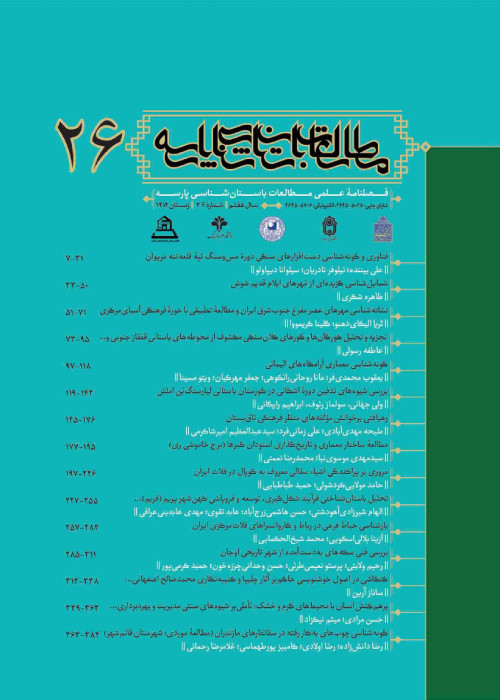The Sassanian Pahlavi Inscriptions of Vigol Fire Temple; Evidences of the Burning Fire Temple of Vigol in the Early Islamic Centuries
The historical site of Vigol and Haraskan is located near Aran and Bidgol city in the north of Isfahan province. The archaeological studies of the first season of this site led to the identification of the central part of a fire temple and a small part of its circumambulation corridor. The second season of the archeological exploration in the fire temple was to identify other spaces around the central part of the fire temple. Archaeological studies revealed that since this fire temple was built in the urban context, it is more important than the fire temples that were built away from settlement areas. Beside architectural evidences, religious elements and decorative stucco relics found in this fire temple, the identification of several Sassanid Pahlavi inscriptions on the walls of the eastern circumambulation corridor of the fire temple and two Ostracons added to its importance. Pahlavi inscriptions founded on stucco plaster of the dado which are written in a beautiful handwriting. Unfortunately, except for a few inscriptions, most of them cannot be read and require extensive research. In this research data collection about Vigol fire temple and its Pahlavi inscriptions was done by field methods and linguistic and descriptive-analytical studies. The main questions of the research are: What is the content of Pahlavi inscriptions and what themes do they include? What period of time does the estimated date of writing these inscriptions include? Given to linguistic and archeological studies, the placement of these inscriptions inside the fire temple, the content and of them has religious themes, and according to their writing style, these inscriptions were probably written in the 7th and 8th centuries AD. According to the dating of the inscriptions, it seems that the fire temple of Vigol had a high reputation until the early Islamic centuries and was probably abandoned forever in the first of 9th AD century.
- حق عضویت دریافتی صرف حمایت از نشریات عضو و نگهداری، تکمیل و توسعه مگیران میشود.
- پرداخت حق اشتراک و دانلود مقالات اجازه بازنشر آن در سایر رسانههای چاپی و دیجیتال را به کاربر نمیدهد.


